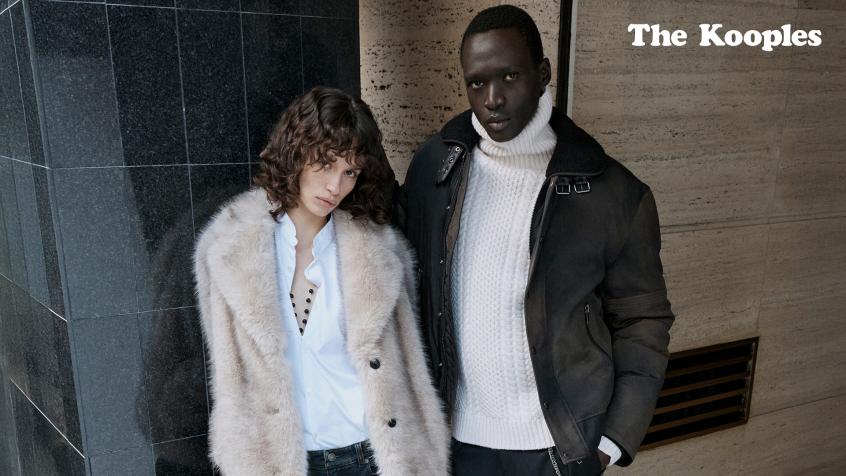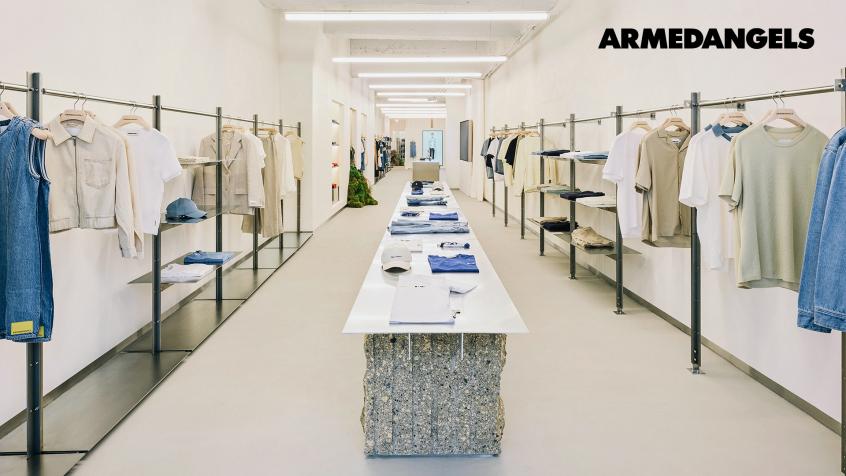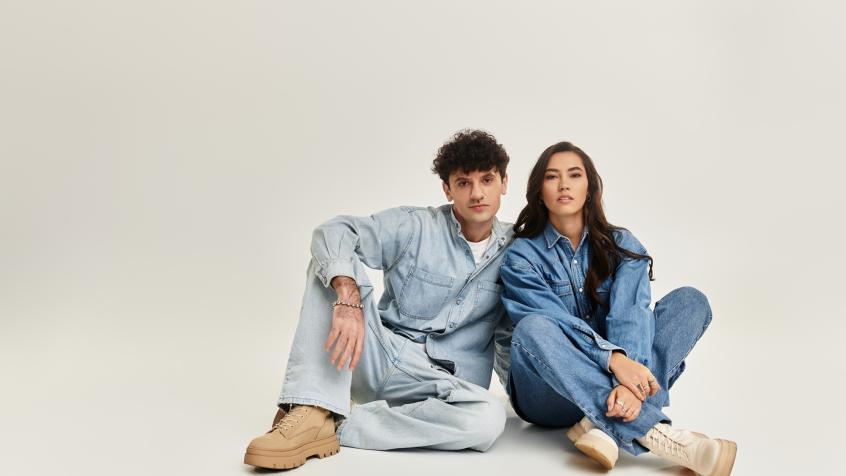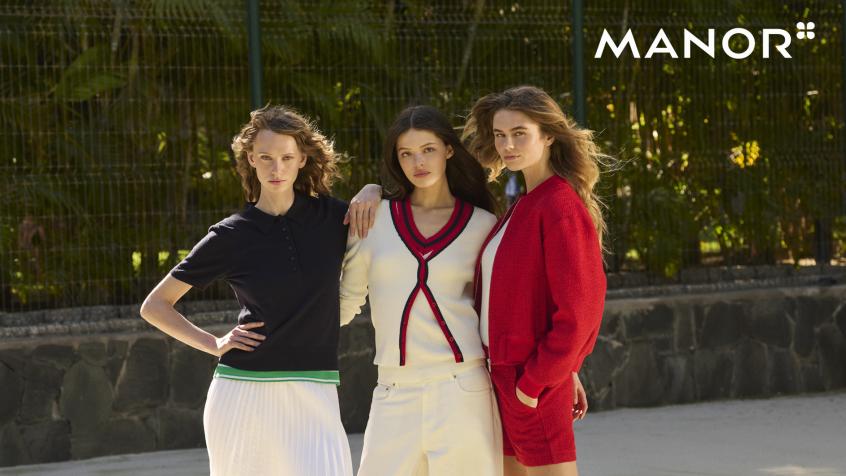Rebuilding Abercrombie & Fitch: from exclusion to inclusivity
The data behind the iconic brand's renaissance

Use AI to enhance your retail strategy
Do you need to revamp your brand strategy? By diving into this analysis, created using Retviews data, discover how an automated competitive analysis tool can help your brand monitor competitors’ assortment, pricing, and discount strategies, and optimize your own brand’s performance. Benefit from the data gathered with Retviews, the AI-powered fashion benchmarking platform, to elevate your brand strategy and stay on top of the competition.
Key takeaways
- Logos, which used to be Abercrombie & Fitch’s trademark, are no longer a part of the brand’s new identity
- Price inflation is strongly affecting the fashion industry and Abercrombie & Fitch is one of the US retailers hit with the highest price hikes
- Abercrombie & Fitch’s revamp strategy focuses on inclusivity in all its facets: from sizing to gender neutral collections
In 2021, under the leadership of its new CEO Fran Horowitz, Abercrombie & Fitch underwent a thorough rebranding. As shown by a 2021 financial report, the company recorded its largest second quarter operating income and margins since 2008, with revenues reaching pre-pandemic levels. The brand was able to rebound where many others failed, thanks to both a strong marketing strategy and a shift in its retail strategy. So, how exactly did Abercrombie & Fitch change and fall back into favour with consumers? Dive into the following Retviews analysis to discover the data behind the US brand’s successful rebrand and its opportunities for improvement.
The departure of the moose
When thinking of Abercrombie & Fitch, its iconic moose logo quickly comes to mind. In 2014 however, the brand dropped the moose logo in a business transformation strategy, taking into consideration the fact that its target market found clothes with logos to be obsolete. Despite having changed its logo to the brand name alone; there has still been a prominent 72% decrease in items displaying a logo, now accounting for just 8% of its total collection.
Retviews data showcases the clear demise of logos. Compared to 2021, the share of discounted logo items for Abercrombie has doubled, as 48% of items with a logo are on sale, compared to 24% in 2021. The decline of logos is seen within the assortments of several US brands, as they are increasingly discounting items that have a brand logo. Moreover, Banana Republic and Abercrombie & Fitch are also decreasing the average price of brand logo items, with a 36% and 8% decrease, respectively.
However, the opposite can be seen within GAP – which, as data shows, is the only brand to decrease discounts, but increase the price and assortment share, of items with brand logos. This contrasting phenomenon could be attributed to the brand’s recent collaboration with Kanye West and Balenciaga – Yeezy GAP engineered by Balenciaga, the majority of which portrays GAP’s logo.

Abercrombie’s assortment mix - Is denim a driving force in its revamp?
Next to US competitors such as GAP, American Eagle and Old Navy, Abercrombie & Fitch holds the most balanced gender mix, 65% of its assortment being dedicated to womenswear, as opposed to other brands’ average 75%. This year however, Abercrombie & Fitch has decreased its menswear assortment by 22% YoY, putting it more in line with other retailers. Abercrombie & Fitch’s assortment strategy is similar to most of its competitors’, keeping a primary focus on ready to wear categories. American Eagle stands out from other US brands, with a stronger focus on accessories.
As Retviews data shows, the main differences in assortment strategies between Abercrombie & Fitch and key US mass market brands, are within the tops and bottoms categories. Unlike its competitors, Abercrombie & Fitch’s assortment share for bottoms is more prominent than its assortment share in tops.
Taking an in-depth look at Retviews data on US mass market brands’ assortment of bottoms, Abercrombie & Fitch has the largest assortment share of jeans, which make up 51% of its bottoms category. Compared to the US mass market average, the brand has a 96% higher focus on jeans. Denim has shown to be a strong fashion trend recently, but a recent focus group’s results showcased that Gen Z shoppers struggle to find denim sizes and styles that fit – therefore, Abercrombie’s focus on jeans pertains to its strategy of better targeting Gen Z.
Abercrombie & Fitch is responding to the underserved demand by increasing their jeans assortment share, providing more diverse styles and inclusive sizing than its competitors. Retviews data indicates that Abercrombie has 39% more straight jeans than other US mass market competitors such as Gap or Old Navy, and 8% less skinny jeans than its competitors. This could be making Abercrombie stand out, as skinny jeans have officially been dethroned by straight jeans in denim sales.
With Retviews, the automated competitive intelligence platform for fashion, you can take a close look into your competitors’ assortment mix, identify their strategies and spot new opportunities for your own brand’s strategy.


A shift towards inclusivity and diversity
One of the main reasons for Abercrombie & Fitch’s lack of success lies in its formerly sexualized marketing strategy, and tendency for exclusion – wanting to only dress a certain type of shopper. The brand has turned its strategy completely around, by focusing on both size inclusivity and diversity. One of the ways in which they have achieved this is by developing gender-inclusive collections; the latest of which was created in collaboration with the Trevor Project, in honor of Pride 2022.
Taking a closer look at size inclusivity, Retviews data indicates that Abercrombie offers a wide range of sizes compared to its competitors, however it is lacking in the 4XL size. Moreover, despite Abercrombie's move towards more inclusive sizing, the brand is still behind competitors when it comes to its sportswear collection. Compared to other activewear and apparel brands, Abercrombie is lacking in sizes 3XL and 4XL. This is an aspect that the brand should take into consideration, especially as the activewear market has been booming in recent years, therefore it would be fundamental to provide a wider size range, to boost the brand’s competitive advantage.
On another note, Abercrombie & Fitch’s gender-inclusive collection makes up 1% of its overall assortment, compared to Old Navy and American Eagle’s gender-inclusive collections which make up 10% and 1% of their overall assortment, respectively.
In contrast with Old Navy and American Eagle however, the brand seems to lack variety, as its gender-inclusive collection is primarily made up of t-shirts, representing 82% of the collection, whereas bottoms and accessories only make up 8% and 10%, respectively. Lacking in quantity and variety gives Abercrombie a window for improvement, as the brand can expand its gender-neutral assortment and include more gender inclusive bottoms, as well as outerwear and dresses.

Pricing
Abercrombie & Fitch purposely has a higher average price compared to its competitors, as its aim has been to achieve a “near-luxury” brand image, which the brand has also achieved by being known for its more premium store setting. Currently however, Abercrombie’s margins have decreased, as they have been affected by supply chain disruptions as well as price inflation – which now runs at a 40-year high.
Abercrombie & Fitch has raised prices more than its competitors with a striking 12% price hike, and in turn, is unable to keep demand stable. A contributing factor could be that, despite Abercrombie’s efforts, customers don’t perceive the brand as offering a higher quality product which would be worth the significant price increase.
To find out all about how mass market brands are tackling price inflation and how your brand can get the right pricing strategy without compromising on sales, dive into Retviews article on price inflation.

Enhance your rebranding strategy with Retviews
Rebuilding a brand that has faltered in the industry shift can be simplified, and you can eliminate the guesswork of finding the right way to restructure your brand strategy thanks to automated competitive analysis for fashion. Retviews, the competitive intelligence platform for fashion, allows your brand to use real-time data intelligence to monitor competitors’ pricing, assortment, and discount strategies, detect trends in real-time and spot opportunities to optimize your assortment, in order to nail your rebranding strategy.
Use the Retviews platform to benchmark your offer against your competitors
Related content









